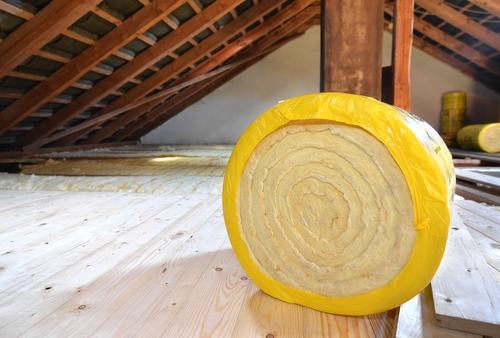Whether commuting to work, dropping the kids off at school or running errands, you take care to ensure that everyone leaves your home each day dressed for the elements. From snow boots and raincoats to light summer clothing, your closets are filled with everything your family needs to take any type of weather in stride. When you live on the North Shore, it’s just as important to make sure your home is also ready for whatever Mother Nature brings your way. These four weatherization tips are guaranteed to improve your family’s comfort while saving energy and your money too.
1. Add Attic Insulation
No matter what type of insulating material you have in your attic, chances are it’s not enough. A Department of Energy study found that 80 percent of homes built before the 1980s are inadequately insulated. If you can see the floor joists protruding from the existing batts, blankets or loose fill, you’ll save energy and money by adding more. Be sure to insulate the access hatch or door to your attic too. A gap as small as 1/4 inch can leak as much air as a heating duct provides. Cover the door with rigid foam insulation and use weatherstripping to make it airtight.
2. Weather-Seal Windows
Drafty windows are notorious energy wasters, accounting for as much as 25 percent of home heating costs. They’re also one of the most cost-effective weatherization projects you can undertake to improve your home’s energy efficiency. These affordable solutions are readily available at your local hardware or home store:
- Self-Stick Weatherstripping. Window and door weatherstripping comes in a variety of materials, but the easiest type to install is adhesive foam tape sold in rolls. Simply peel off the backing and stick it in place.
- Plastic Sheeting. Sold in easy-to-install kits, this clear plastic film is designed for application to the inside of your window to reduce drafts during winter weather.
- Casing Caulk. The molding or casing that frames windows is a common source of drafts. Applying rope caulk to the interior and exterior casing is an easy way to plug up the leaks.
3. Eliminate Air Leaks
From electrical sockets to plumbing pipes, any fixture that penetrates an exterior wall in your home has the potential to let cold air indoors during the winter and allow the air you’ve paid to cool to escape when it’s hot outside. Small cracks and gaps might not seem significant, but they can add up to significant energy loss. Use caulk and a can of spray foam insulation to seal up the leaks to lower your monthly energy bills by 10 percent of more. Common sources of air infiltration include:
- Cable TV and phone lines
- Pet doors
- Mail chutes
- Outdoor water faucets
- Dryer vents
- Chimney flues
4. Seal Drafty Ductwork
Home weatherization isn’t complete without ensuring that the maze of ducts that supply conditioned air to your home isn’t wasting your energy dollars through leaks, cracks and loose connections. The most effective way to assure a tight seal is with the Aeroseal process where an aerosolized mist is blown into every nook and cranny to form a permanent barrier. This type of sealing method can increase the energy efficiency of your duct system by as much as 30 percent.
Your Energy Efficiency Experts
Weatherizing your North Shore home helps ensure that your family enjoys a comfortable environment in every season, and it’s a great way to keep your energy bills in check too. At Ireland Heating and Air Conditioning, we’re proud to offer a wide array of money-saving services that let you spend less on household upkeep and save more for the goals and activities that matter most to you. To learn more, check out our energy-saving solutions or call us today at 847-388-0108.



